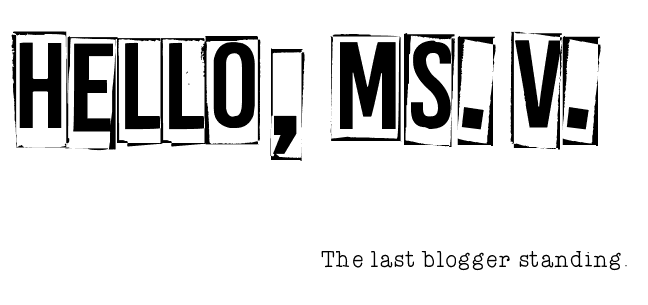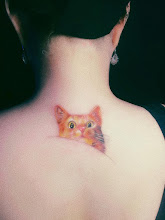 |
| Aerial view of Pasay City |
They say that a lot of things can be said about you just by telling people where you’re from and where you chose to stay.
But I don’t entirely believe that. Sure, the environment can mold you to become the person that you are but it doesn’t mean it will totally define you.
Society seems to suggest that getting away from the place where you grew up is the true barometer of success. The farther from where you’ve been, the better. Sometimes it is frowned upon when you hunker down in one place for most of your life. I know this all too well as I still live in the very same place where I was born and raised.
Because most of my contemporaries have either moved town or migrated overseas, I do get the taunting “Nandiyan ka pa rin?” (You’re still there?) -question every now and then, even if they knew that most migration or moving away usually happens with the changing of work location or getting married—neither of which I’ve done.
I’m what you’d call “lehitimong taga-Pasay” (legitimately from Pasay) because even my paternal grandparents were from here. This is also where Lolo Eliong and Lola Kuala raised their eight sons, including my father, who all went on to have their own families.
 |
| Wedding photo of my paternal grandparents Lolo Eliong (Aurelio) and Lola Kuala (Pascuala) |
Pasay, which was formerly a province of Rizal, was one of the first four cities of Metro Manila. And because it borders Manila, Parañaque, and Makati, I always say that we’re pretty lucky as we are in a prime location accessible to other major cities in the metro. Anywhere is just one to two rides, tops.
When I was young, some call me “butiking-Pasay”, being a scrawny kid (butiki is Tagalog for house lizard). I don’t know where that Pinoy expression came from but I resented it so much even if it seems to aptly fit me then. I mean, being thin and from Pasay.
Growing up in the '80s, my city had a bad rap not only because of the poverty-stricken slums, petty crimes, and drug-addiction but also because of the string of bars and seedy, pay-by-hour motels where prostitution was quite rampant. It even became a running joke every time I’d tell people where I’m from.
The city is known for its ill reputation of having many sex workers back in the day. Like how one of the more-vocal AIDS victims in the '90s was from this city. I remember how she was then backed-up by a flamboyant, sward-speaking city councilor, who proposed to have a stone sculpture built of her embracing a seven-foot penis. It's a good thing that The National Historical Institute rejected the idea because—WTH?!?!
Anyway…
Before the SM Mall of Asia was opened in 2006, there really isn’t that much to see here, except maybe for the Cultural Center of the Philippines Complex in a reclaimed land along Manila Bay. It is home to Tanghalang Francisco Balagtas (better known as The Folk Arts Theater), The Philippine Convention Center (PICC), the amusement park Star City, and the haunted Manila Film Center. We had to go to Makati or Manila if we want to enjoy a real mall because we only have small department stores (Masagana, Pasay Commercial), establishments, and filthy cinemas showing double-features and soft porn.
I am not sure about the allegations of corruption, as the city then seemed to have been frozen in time. While neighboring cities are slowly enjoying urbanization at their best, Pasay remained as it was. Good thing it all changed by the 2000s when our city started catching up with the rest and a lot has changed. We are now one of the richest and first-class cities in Metro Manila with about P19.8 billion in assets as of 2019.
Even so, the notoriety of Pasay still looms to this day.
***
 |
| Tramo St. along Antonio Arnaiz Ave. (formerly Libertad) |
I reside in this major street called Tramo, which stretches north to south from Pablo Ocampo St. (formerly Vito Cruz) in Manila to Andrews Avenue. The road was actually an abandoned tranvia line.
It’s so long that I find it funny sometimes when people ask me if I knew this certain person who’s also from around here. For sure the person asking doesn’t have any idea that the street itself is almost 3 miles long. Even funnier is when I tell them I don’t know the person and they’d go: “But he’s also from Tramo!”
It has areas that range from decent to squalid. Again, while I’m fortunate to be in an “okay” part with well-maintained houses, a low crime rate, and few illegal activities, Tramo in itself has an unfavorable reputation much like the city where it belongs. Maybe that’s why the people here call it “Omart Village”, to give it a “classier” sound in an attempt to make it seem like a gated village.
This place is the backdrop of my every childhood memory. My parents allowed me to be a kid and gave me plenty of time to play outside. I became friends with neighbors my age, bruised and injured myself many times. I experienced a lot of things that I don’t think my nephews ever will because, with the passing of time, the road has become unsafe with the many vehicles coming and going, with speeding motorbikes having no regard for safety.
I have seen a lot of changes in all my years of being here. I was in my early years of grade school when they widened the road which made our once big gateway smaller as it is now. In the more recent years, neighbors come and go, with new and better structures being built. One of the rare times I decided to take a walk, I’ve seen old houses being converted to up to four-storey buildings, while some remain in substandard housing, like ours. Some have extended their garages and gardens to the sidewalk like they own the place (considering it’s a two-way street).
Tramo, a Spanish word for section, is a tough neighborhood in general regardless of what section you are in. If you live long enough in this place, it makes you street smart. When you’re from around here, you’ll learn how to respond to difficult and even dangerous situations almost instinctively. Those who grew up here are well-aware of what alleyways or settlements along the stretch to avoid. We pay attention to our surroundings and able to deal with all kinds of people. We know when to give off a self-assured stance but also when to blend in or GTFO. And because I was practically exposed to the reality and hardships early on in life, there aren’t that many things that would shock me.
While our area is not as densely populated as the other sections, it isn’t rare for taxi drivers to decline me once I tell them “Sa Tramo po”. They’ll complain that they don’t want to go here because it’s masikip (narrow) and so many people are blocking the way. I had to explain sometimes that we would not have to go all the way in because we’re just about two houses from the major road (Antonio Arnaiz Avenue).
But it’s not all bad. At least in our neighborhood, there’s still that sense of community; of helping each other in times of need. Never mind the gossip mongers and the nosy ones as there will always be one even in upscale subdivisions and condos. But here, we have neighbors that are friendly enough, reliable, and helpful. It’s what makes this place better than everywhere else.
And because we’ve been here all our lives, a lot of people know our family. At least in this side of Tramo, ask for the De Leons and they’ll point you right to our house. Tricycle drivers and neighborhood tambays (bums) hanging around would not dare catcall me or mess with anyone in my family if they know what’s good for them.
What I always love about this place is how you’ll never go hungry here. Everywhere you look there’s a store, a food stall, an ambulant street vendor.
Sadly, there will be people who will still judge and stereotype me. Many times there’s that uncomfortable shift in the conversation once they learn where I live. Some do not even mince their words and would enjoy putting me on the spot by asking me about the rampant drug addiction in our area (which isn’t as bad as other places).
Women from this city were viewed by some as loose and promiscuous. Certainly, not the same echelon as a “Makati girl” or “Alabang girl”. Classmates and officemates would also make fun of me asking if I ever worked at Miss Universal, a known strip-club in Pasay.
Over time I’ve learned to ignore and not take such comments and remarks personally, because hey—why would I even defend what is partly true? The thing is, it will always be up to you what you’ll bring from all your experiences, including the lessons from the very place where you’re deeply-rooted. In this case, I chose the good and left the bad ones. So, no. The place where I grew up (and where I’m staying until now) doesn’t define me. See, I turned out fine.
When I was young and understandably naïve, I always say I couldn’t be anywhere but here. Relocating is out of the question. This is my home, where my roots are. Now I am more open and realistic about leaving if and when I have the chance—even if the probability of that is slim. Meanwhile, I prefer to stay here unless there is that absolute need to move. Until that happens, I will continue to pin this as my home city.
***
A few days ago, the spotlight is on Pasay again for the wrong reasons. Our city mayor has been tested positive for Covid, and 30+ barangays are currently on a localized lockdown because of our rising Covid cases. Ours is one of those with the highest case, that our barangay was particularly mentioned in the local news. There are even rumors that what we have is the UK strain variant of the virus although it’s all hearsay as of the moment.
This surge didn’t come as a surprise as the residents on the other side of our barangay do not observe social distancing. CCTV cameras (yes, we have that now) would show people hanging outside their homes, some without their face masks on. Unattended children can be seen playing outside as well. Our barangay officials, instead of patrolling the area, would simply embarrass violators through the PA system (yes, we have that too). Obviously, this approach didn’t stop the community transmission.
As per the latest update, an elderly neighbor in the house next to us has been tested positive. Proximity-wise, this is by far the nearest case ever to us that I am afraid to even go to our gate now.
Our barangay is on lockdown but they are more strict on areas with known cases. They enforce single-entry checkpoints and curfews. This came about just right after the recommendation of Metro Manila mayors to ease the restrictions by allowing the reopening of cinemas, arcades, and other indoor leisure establishments.
So there you go. My home city, people. Love it or hate it—there’s no middle ground.





This is a good read and do agree and must say that living in Pasay, is living in comfort and accessibility.
ReplyDelete